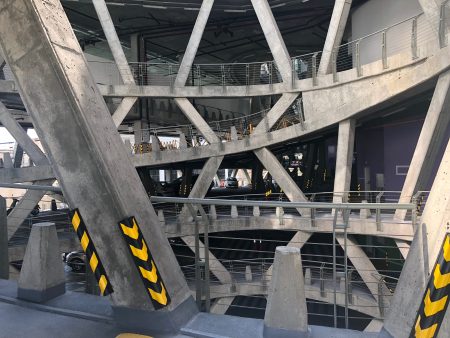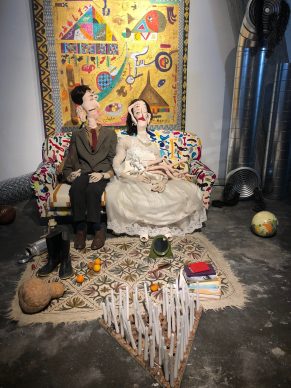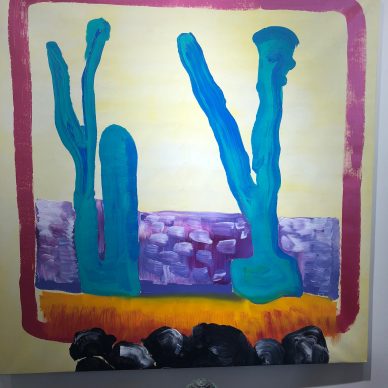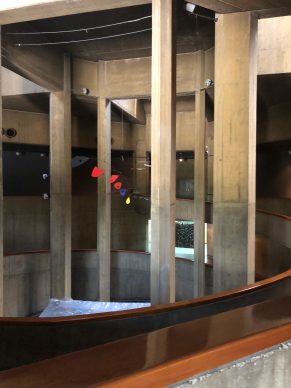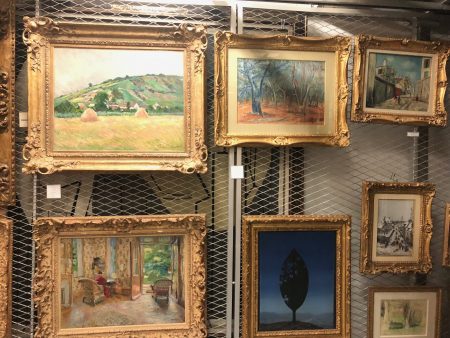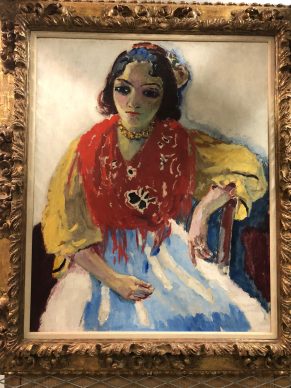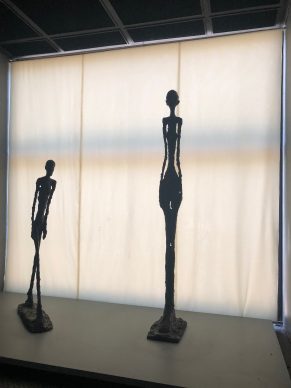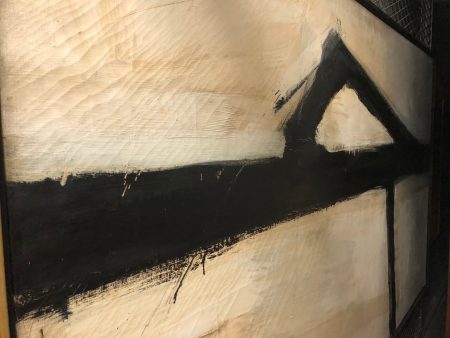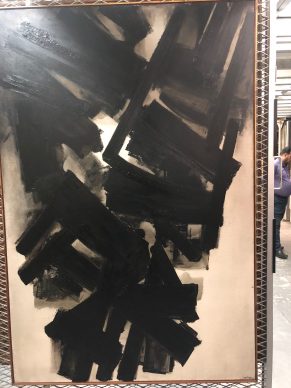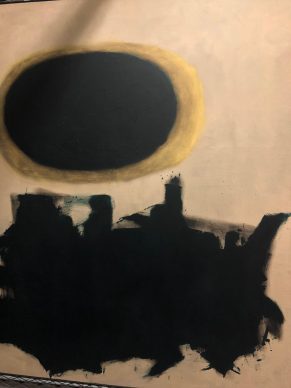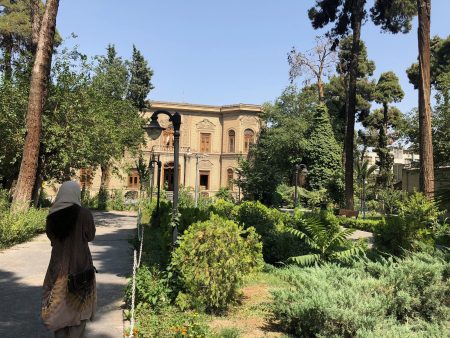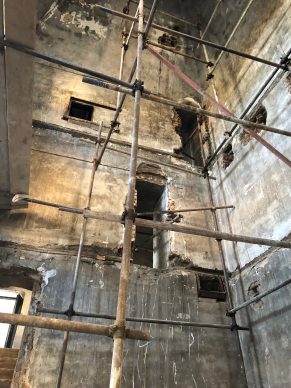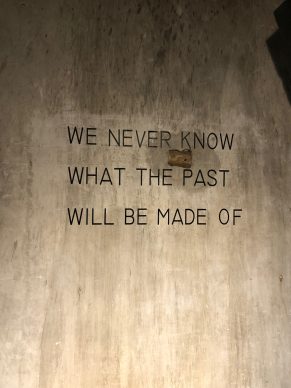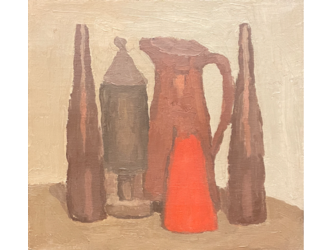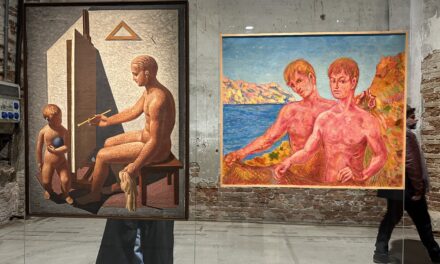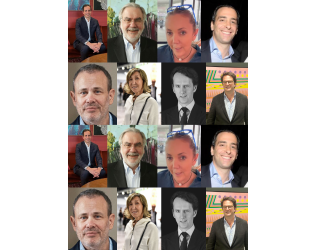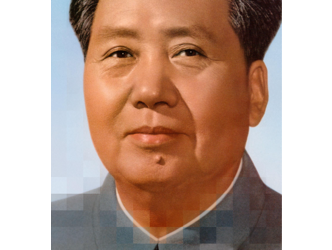She’s an American-Iranian friend who receives daily news from Tehran via her family who live in the country.
Like many Iranians, she is particularly pessimistic about the Iranian State right now.
Like many Iranians, she knows just how difficult it is to live a peaceful life today in the land of the mullahs.
But I decided to embark upon this short trip to Iran anyway, on the invitation of the French embassy in Iran and a new contemporary art fair, the first in the country, Teer Art Fair, which was held in Tehran from 26 to 30 June to hold a conference on the art market and its recent evolutions.
I don’t regret going. It was one of the most fabulous mini-trips I have ever done.
People who are interested in contemporary art in Tehran see creation as a lifeline.
For them this is not a fantasy or a hobby, but rather an existential need. Their relationship with current artistic output reminded me of what can be found in South Africa today.
There are wounds to be healed. For the South Africans it’s about living with acute violence, the legacy of a series of racist official policies.
In Iran the chaos is linked to many factors, including a feeling of isolation related to the economy and politics.
Since February, the local currency has depreciated by almost half its value.
Donald Trump has reneged on the Iran nuclear deal signed by Barack Obama and Iran is awaiting sanctions advocated by America concerning the oil trade. The foreign exchange counters have closed. International credit cards don’t work anywhere in the city.
In reality, there are deep fractures at the heart of society. Without mentioning the widening rift between the military powers and the religious powers, it’s clear that the population in a broad sense fails to identify with the power of the mullahs. You only have to look at the relaxed and nonchalant way the women wear their headscarves in Tehran to understand that it’s not a personal choice, but rather an obligation imposed by power.
Paradoxically, it is against this turbulent backdrop that Teer Art fair has opened. On Friday, the equivalent of our Sunday, 2000 people visited the site, composed of just 10 galleries which were installed on top of a shopping mall on the premises of a chic car park resembling the one designed by Herzog & de Meuron in Miami, 1111 Lincoln Road.
I asked the two founders of the fair about the current state of art in Iran, Maryam Majd director of the fair and owner of the Assar Art gallery explains that their goal is to showcase the Iranian art scene, which is too isolated from the rest of the world. “The way we are depicted in the foreign media is so bad. We are not terrorists.”
Hormoz Hematian, who is also director of the Dastan Basement gallery which took part in the last Art Basel Hong Kong fair, thinks that the role of artists is to humanize the current political situation.
The most striking booth in the fair was a solo show in the form of an installation by Hadi Alijani (born in 1987) in the Aaran gallery space. Two hand-sewn dolls, Mr and Mrs, show the chaos of conventions for what we imagine to be a contemporary Iranian couple.
The director of the Aaran gallery, Nazila Noebashari, gives an unfiltered explanation of the difficulties the Iranian art world must face today.
Even within this context there are many who aren’t giving up.
The businessman Hamidreza Pejman, who was graced in 2017 with a profile in the New York Times, set up a foundation bearing his name in 2015 with the aim of building bridges between Iranian art and international art.
He invited the brilliant French artist Neil Beloufa (cf the report) to Tehran last winter and by the summer of 2019 his foundation is due to open on the site of an old brewery across 17,000 m2 in the city centre.
The construction is the work of a brilliant architect of Iranian origin who lives in New York, Ahmed Reza, who has previously worked for Herzog & de Meuron and Rem Koolhaas.
The large and beautiful red brick building is to serve as a vital home for artistic creation for the country through inviting international artists to come and establish a dialogue with the local art scene.
Hamidreza Pejman played the confession game while stretched out on an elegant sofa to talk about his projects.
Still in the centre of Tehran, the legendary collection of the city’s museum of contemporary art is due to reopen in November.
I was lucky enough to be given access to the stockpiles housed in the beautiful concrete building designed by the architect who also designed the collection famous for belonging to the Shah’s wife, Kamran Diba, who now lives in France.
The collection contains a number of major works, from four sculptures by Giacometti to two paintings by Rothko, a Franz Kline from 1955, a Pollock from the 1950s, three paintings by Francis Bacon and even a study for Marcel Duchamp’s The Large Glass from 1914. Talks seeking to display the Tehran museum of contemporary art’s collection in Germany and Italy fell through a few months ago
Since then nothing has been bought by the museum, which has 1500 western artworks and 1500 Iranian works. Even donations are not accepted by the institution.
What is surprising is the care taken by the authorities for the preservation of this heritage that has nothing to do with the diktat of the mullahs.
In this same spirit of scrupulous preservation, you must pay a visit to the Glassware and Ceramics Museum in the same area, situated in what was once a private villa, where the collections were laid out in a particularly exuberant and gifted way at the end of the 1970s by the Austrian architect Hans Hollein. He is none other than the father of the new director of the Metropolitan Museum in New York, Max Hollein.
It’s one small step towards potentially bringing the arts in Iran closer to those in America, set within a context of vociferation in the media from the president of the USA.
Donating=Supporting

Support independent news on art.
Your contribution : Make a monthly commitment to support JB Reports or a one off contribution as and when you feel like it. Choose the option that suits you best.
Need to cancel a recurring donation? Please go here.
The donation is considered to be a subscription for a fee set by the donor and for a duration also set by the donor.


